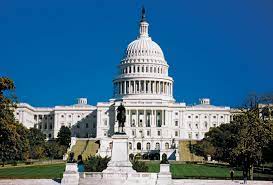S&P 500: -1.99% DOW: -2.25% NASDAQ: -1.74% 10-YR Yield: 4.53%
What Happened?
Markets experience a turbulent week driven by the Federal Reserve’s hawkish tone on future rate cuts and persistent inflation concerns. Midweek, the Fed scaled back its 2025 rate cut projections, sparking a sell-off that sent the Dow plunging over 1,100 points in its longest losing streak since the 1970s. Treasury yields surged, and investor sentiment soured as inflation remained stubbornly above target despite signs of easing. By week’s end, major indexes were down nearly 2%, highlighting the broader market’s struggle with Fed uncertainty.
Friday provided a much-needed rebound after cooler-than-expected Personal Consumption Expenditures (PCE) inflation data revived hopes of easing price pressures. Chicago Fed President Austan Goolsbee’s comments on the downward trajectory of inflation further reassured investors, prompting a sharp rally. The Dow regained nearly 500 points, with the S&P 500 and Nasdaq also finishing higher. Despite this, market breadth weakened, with fewer stocks trading above long-term averages, while elevated volatility and political uncertainty over government funding added to market jitters.
Sector performance underscored the week’s challenges. Energy and real estate led declines, down 6% and 4.5%, respectively, as rising rates pressured rate-sensitive areas. Utilities fell 3% amid higher Treasury yields, while defensive sectors like consumer staples and healthcare posted smaller losses. Technology showed resilience, buoyed by megacap strength, and ended the week with more modest declines. Although Friday’s rally eased some concerns, the broader market outlook remains cautious as investors navigate Fed policy and prepare for potential shifts under the incoming Trump administration.

Fed Lowers Rates But Sees Fewer Cuts Next Year Due To Stubbornly High Inflation
- Central bank’s policy rate lowered to 4.25%-4.50% range
- New policymaker projections forecast two rate cuts in 2025
- Incoming Trump administration adds uncertainty to outlook
The key takeaway – The Federal Reserve cut interest rates by 25 basis points, bringing the federal funds rate to a range of 4.25%-4.5%, but signaled a slower pace of monetary easing in 2025. Fed Chair Jerome Powell emphasized that future cuts hinge on progress in reducing inflation, which remains above the 2% target despite significant improvements since its 2022 peak. Projections now indicate only two 25-basis-point cuts in 2025, a sharp reduction from prior forecasts, as inflation is expected to remain elevated at 2.5% for core PCE. Powell also noted that policy discussions are beginning to incorporate the potential inflationary impacts of President-elect Donald Trump’s proposed tariffs, tax cuts, and immigration policies, which have raised uncertainty in the economic outlook.
Markets reacted sharply to the Fed’s cautious stance, with the S&P 500 and Nasdaq falling 3% and 3.6%, respectively, while bond yields rose and the dollar strengthened. The revised dot plot projects a terminal rate of 3.1% by 2027, higher than previously forecasted, reflecting slower progress in reducing inflation. Powell’s remarks about the “closer call” on the recent rate cut and the potential for a pause in January highlight the Fed’s wariness amid strong economic growth, low unemployment, and persistent price pressures. With the new administration’s policy changes looming, the Fed appears poised to tread carefully, ensuring flexibility to adjust to evolving economic conditions.

Key Fed Inflation Measure Shows 2.4% Rate In November, Lower Than Expected
- The PCE price index, the Fed’s preferred inflation gauge, showed an increase of just 0.1% from October and a 2.4% annual rate, both below expectations.
- Excluding food and energy, core PCE also increased 0.1% monthly and was 2.8% higher from a year ago, with both readings being 0.1 percentage point below the forecast.
- Personal income rose 0.3%, short of the 0.4% estimate. Personal expenditures increased 0.4%, one-tenth of a percentage point below the forecast.
The key takeaway – November inflation data provided a glimmer of relief, as the PCE price index rose just 0.1% month-over-month and 2.4% annually, both below expectations but still above the Fed’s 2% target. Core PCE, which excludes food and energy, increased 2.8% year-over-year, unchanged from October. Goods prices declined 0.4% over the year, while services rose 3.8%, highlighting persistent inflation in services despite cooling in housing costs.
Markets reacted positively to the cooler-than-expected inflation readings, with stock indexes reversing early losses and Treasury yields easing. The data briefly alleviated concerns raised by the Fed’s hawkish tone earlier in the week, which had rattled investor sentiment. Friday’s rally, fueled by inflation optimism, saw the Dow surge nearly 500 points, with the S&P 500 and Nasdaq also posting gains. However, with the Fed signaling fewer rate cuts in 2025 and inflation remaining above target, markets remain cautious, particularly in rate-sensitive sectors like real estate and utilities.

Dollar Stores Are Flashing a Warning Sign About Lower-Income Consumers
- Congress approved a temporary funding bill extending government operations through March 14, along with over $100 billion in disaster relief and farm aid, avoiding a shutdown.
- Speaker Mike Johnson overcame GOP divisions and opposition from Trump and Musk, excluding controversial provisions like a debt ceiling increase, which was postponed to 2025.
The key takeaway – Congress narrowly avoided a government shutdown by passing a stopgap spending bill that extends funding through March 14 and provides over $100 billion in disaster and farm aid. The measure received bipartisan support in both chambers, with the House voting 366-34 and the Senate 85-11. Speaker Mike Johnson’s third attempt at passing the bill succeeded after previous plans were derailed by internal GOP conflicts and opposition from President-elect Donald Trump and Elon Musk. The final bill excluded contentious provisions, such as raising the debt ceiling, which Republicans deferred to next year, setting the stage for potential battles over spending cuts and fiscal policy in 2025.
Markets reacted positively to the resolution, avoiding disruption from a government shutdown. However, concerns linger over the GOP’s slim majority in the next Congress and the potential for political gridlock. The stopgap measure averted immediate economic turmoil, but long-term uncertainty surrounding debt ceiling negotiations and spending reductions could pose challenges, especially as Republicans grapple with balancing fiscal conservatism and campaign promises like protecting Medicare and Social Security.
From Around the Watercooler

- CFPB Sues America’s Largest Banks For ‘Allowing Fraud To Fester’ On Zelle
- Starbucks Baristas Strike In Three U.S. Cities During Pre-Christmas Rush
- America’s Farm Recession Is Here. One Early Response Is Sending Billions to Farmers.
- Death Toll In Attack On Christmas Market in Germany Rises To 5 And More Than 200 Injured

